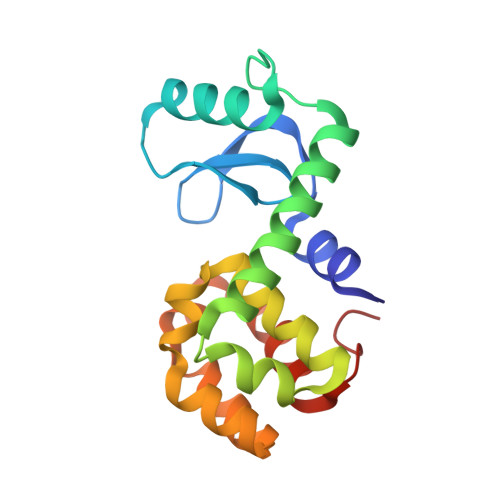Temperature artifacts in protein structures bias ligand-binding predictions.
Bradford, S.Y.C., El Khoury, L., Ge, Y., Osato, M., Mobley, D.L., Fischer, M.(2021) Chem Sci 12: 11275-11293
- PubMed: 34667539
- DOI: https://doi.org/10.1039/d1sc02751d
- Primary Citation of Related Structures:
7L37, 7L38, 7L39, 7L3A, 7L3B, 7L3C, 7L3D, 7L3E, 7L3F, 7L3G, 7L3H, 7L3I, 7L3J, 7L3K - PubMed Abstract:
X-ray crystallography is the gold standard to resolve conformational ensembles that are significant for protein function, ligand discovery, and computational methods development. However, relevant conformational states may be missed at common cryogenic (cryo) data-collection temperatures but can be populated at room temperature. To assess the impact of temperature on making structural and computational discoveries, we systematically investigated protein conformational changes in response to temperature and ligand binding in a structural and computational workhorse, the T4 lysozyme L99A cavity. Despite decades of work on this protein, shifting to RT reveals new global and local structural changes. These include uncovering an apo helix conformation that is hidden at cryo but relevant for ligand binding, and altered side chain and ligand conformations. To evaluate the impact of temperature-induced protein and ligand changes on the utility of structural information in computation, we evaluated how temperature can mislead computational methods that employ cryo structures for validation. We find that when comparing simulated structures just to experimental cryo structures, hidden successes and failures often go unnoticed. When using structural information in ligand binding predictions, both coarse docking and rigorous binding free energy calculations are influenced by temperature effects. The trend that cryo artifacts limit the utility of structures for computation holds across five distinct protein classes. Our results suggest caution when consulting cryogenic structural data alone, as temperature artifacts can conceal errors and prevent successful computational predictions, which can mislead the development and application of computational methods in discovering bioactive molecules.
Organizational Affiliation:
Department of Chemical Biology & Therapeutics, St. Jude Children's Research Hospital Memphis TN 38105 USA [email protected].


















